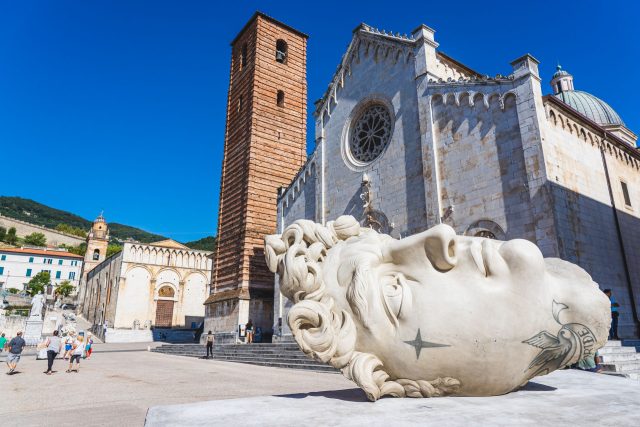What I like is Pietrasanta: a beautiful town, with a unique square, a cathedral worthy of a great city, and, in the background, the Apuan Alps. And what a country around! What mountains, what greenery, what shadows, what rivers, what streams resonant and fresh with chestnuts and olives among the greenery! Here I would like to lead you, my poor, sorrowful one: here you would feel a little better, truly..
Giosuè Carducci
Pietrasanta, the city of marble and artists, is the heart of Versilia. This charming medieval town has become a major draw for both Italian and international tourists, who visit year-round to wander its historic center, soaking in its beauty, art, and rich culture. Pietrasanta is saturated with art.Its streets are alive with galleries and works by renowned international artists, and during the season, major exhibitions of both famous and emerging artists are showcased.
The atmosphere feels almost bohemian: the small cafes overlooking the narrow streets or the main square have heard countless stories. Right there, between a coffee and a glass of wine, ideas and inspirations have sparked, debates have taken place among artists and intellectuals, and large projects and initiatives have taken shape.
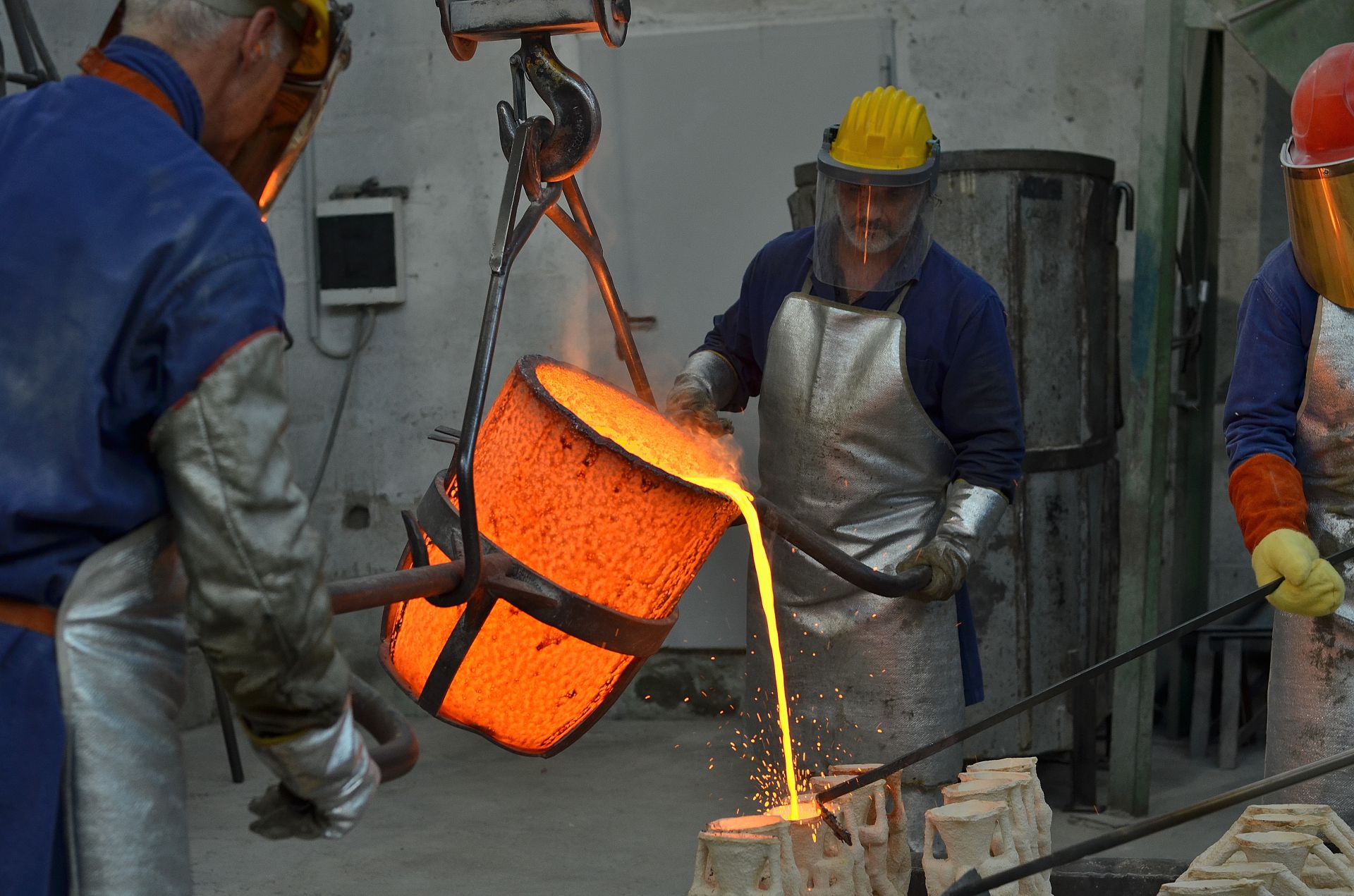
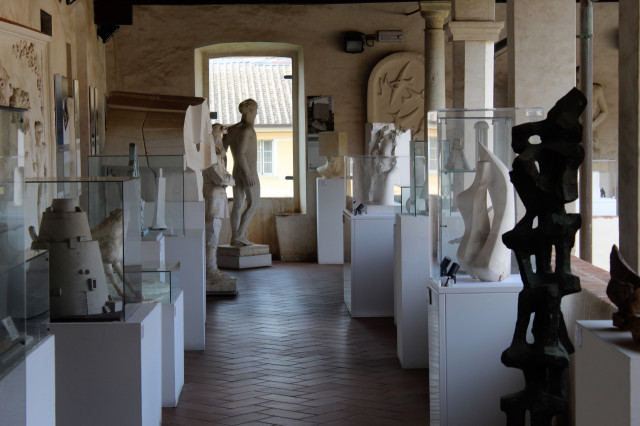
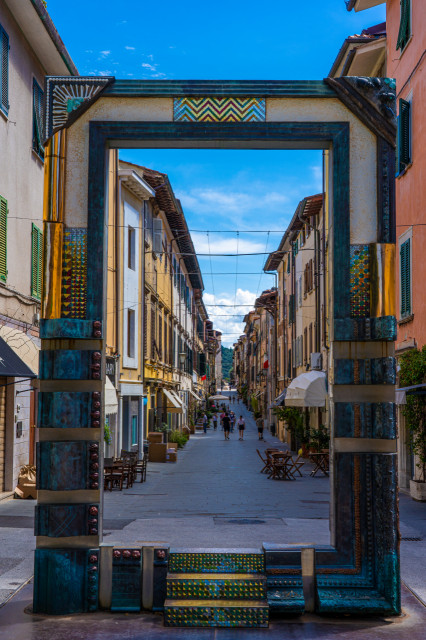
No wonder Pietrasanta is called “The Little Athens,” as its history is closely intertwined with art. Michelangelo himself stayed here for an extended period with his apprentices to work the pristine marble from the nearby quarries, which has become famous worldwide. Pietrasanta is also known as an “open-air museum,” as every street, alley, square, or roundabout features world-renowned sculptures, in addition to numerous art galleries that can be visited year-round, such as “Giannoni & Santoni Collaborazioni Artistiche” on Via Sauro.
The many artistic foundries in the area have also played a key role in making this place a beloved destination for artists.
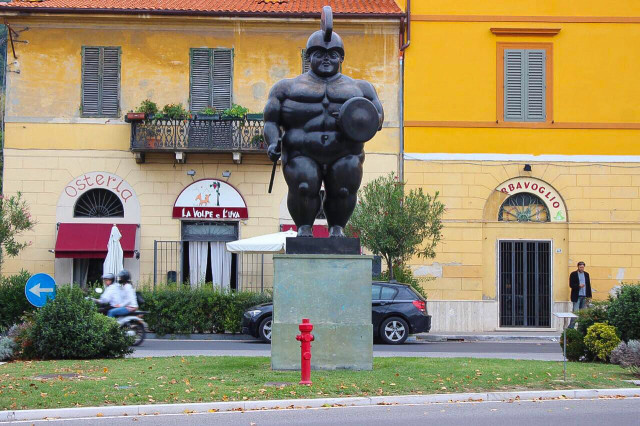
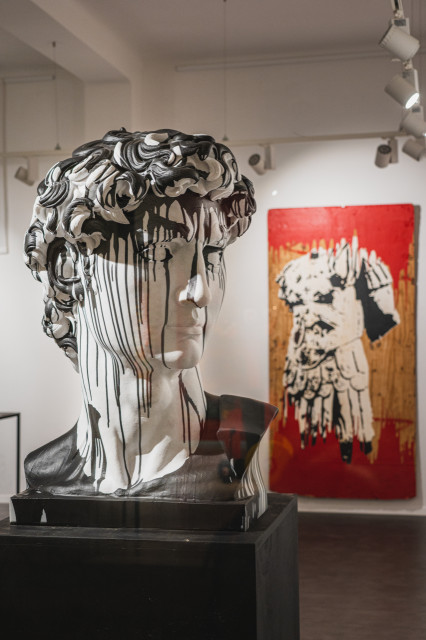
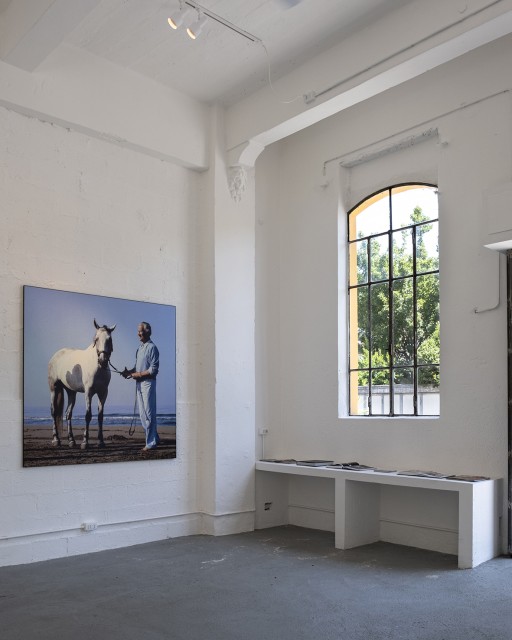
ATTRACTIONS TO DISCOVER
Museum of Models (Museo dei Bozzetti)
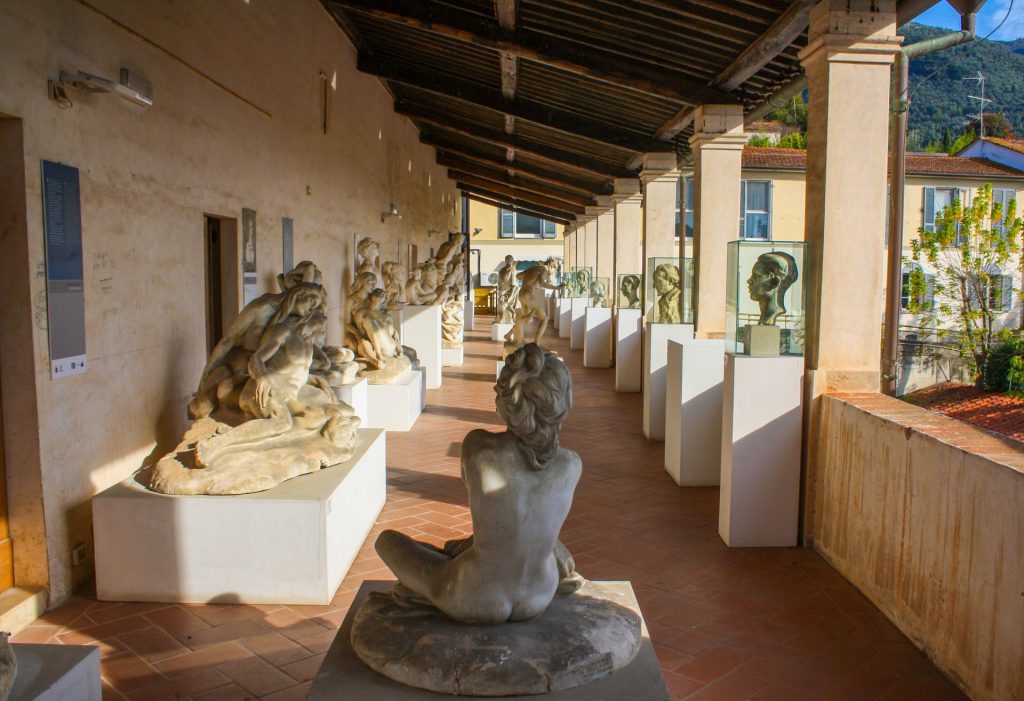
Founded in 1984, the Museum of Models in Pietrasanta aims to document the artistic activity of the many sculptors who come from all over the world to create their works in the local workshops. This initiative is special, as it tells the story behind the creation of a piece of art. It’s no coincidence that this museum was founded here, where sculpture has been a fundamental heritage for centuries.
The models and sketches represent the initial idea of the sculptor before the final piece is created. These range in size from a few centimeters to massive works, typically made from plaster. The collection includes over 700 sketches and models, created by more than 350 Italian and international artists.
Botero’s Frescoes in the Church of Misericordia
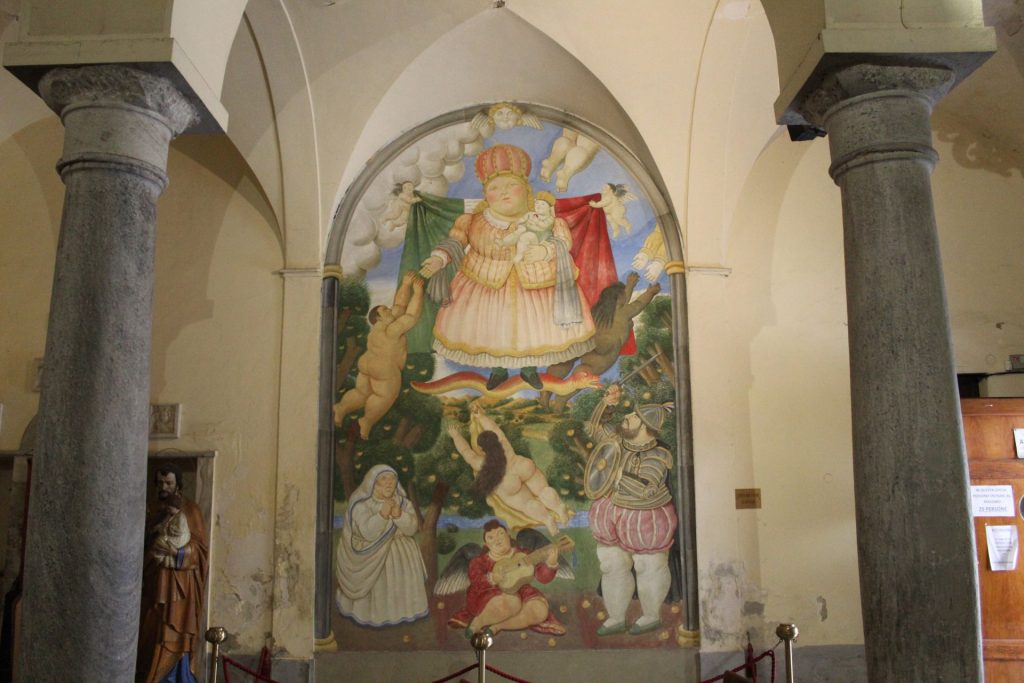
Over the years, Pietrasanta has established itself as an international hub for art and sculpture. Today, it’s home to many renowned artists such as Igor Mitoraj, Fernando Botero, Jean Michel Folon, Pietro Cascella, and Arnaldo Pomodoro, who have honored the town with their works. Pietrasanta is also the birthplace of the famous poet Giosuè Carducci.
In 1993, Botero created two impressive frescoes, “The Gate of Paradise” and “The Gate of Hell,” which are located in the two naves of the church. These works, with their characteristic forms, colors, and style, will leave you in awe. You’ll recognize modern characters and even Botero himself in the frescoes, though we’ll leave the surprise for you to discover in person.
Bell Tower of the Cathedral of San Martino
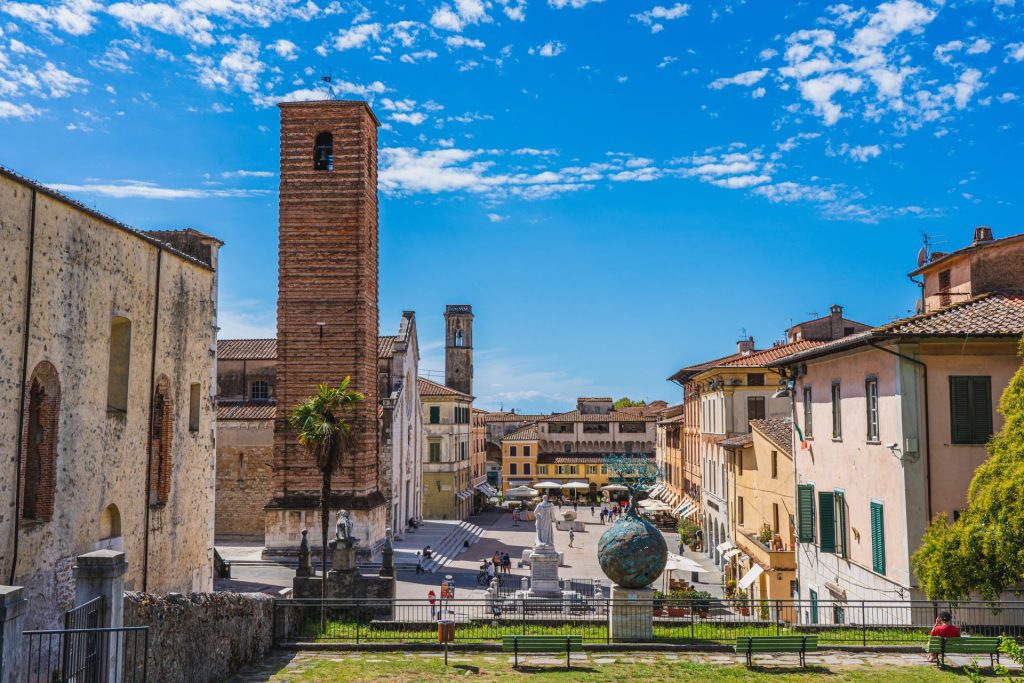
The 16th-century bell tower of the Cathedral of San Martino in Pietrasanta is made of brick and stands about 35 meters tall. It has an unfinished exterior, suggesting it was originally intended to be covered in marble. The tower hides something spectacular inside: a remarkable self-supporting spiral staircase, carved into a masonry monolith treated as if it were marble. This staircase remained largely unknown for almost 500 years.
The bell tower was commissioned by the Collegiate Church of San Martino around 1520 to Donato Benti, a collaborator of Michelangelo. The tower was constructed during the period when Michelangelo stayed in Pietrasanta to extract marble for the facade of the Church of San Lorenzo in Florence. Many scholars attribute the design of the grand staircase, with its stunning chiaroscuro effects, to this great artist.
Giosuè Carducci’s Birthplace
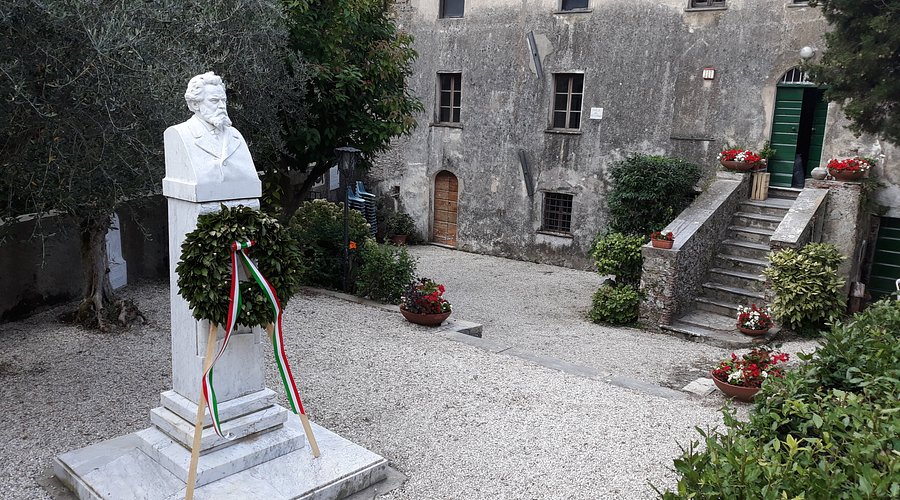
Giosuè Carducci, the famous poet and Nobel laureate in Literature (1906), was born in Valdicastello, a small and picturesque village on the hills of Pietrasanta, on July 27, 1835.
The house where he was born is now a museum dedicated to his memory, housing furniture, personal objects, and mementos.
Carducci moved to Castagneto in 1838 and later to Florence but often returned to his birthplace. He expressed his love for Pietrasanta and his hometown in his letters.
Visiting his home is like stepping into his poetry.
The Versiliana Park
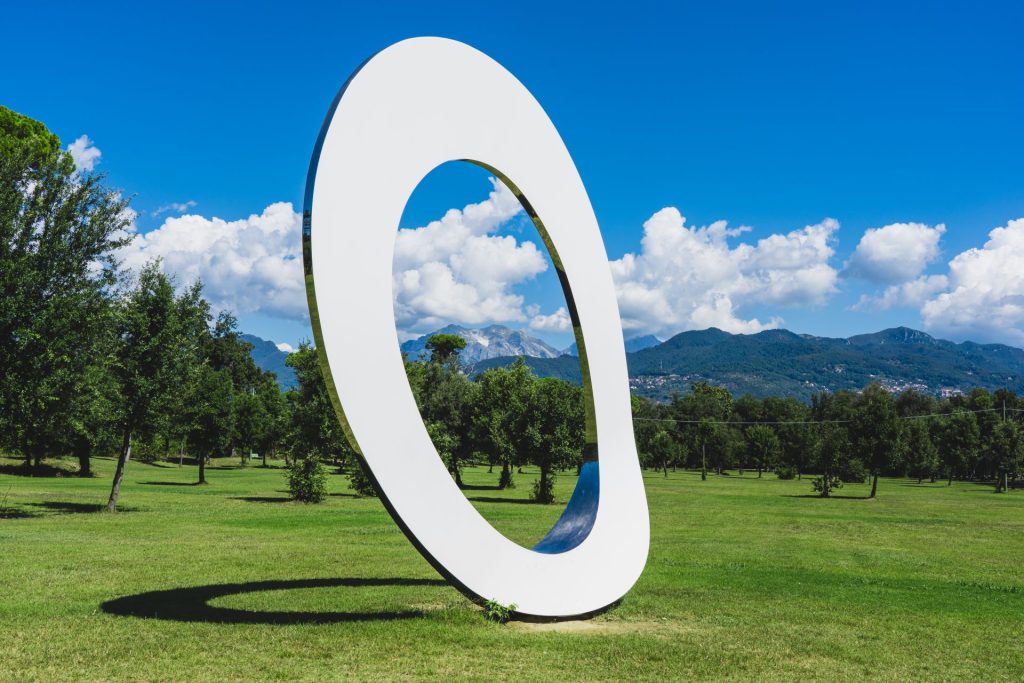
This natural area is noteworthy not only for its beauty but also for its cultural significance. The park is a true green lung of the Versilia coast, covering approximately 800,000 square meters, and is located right next to the beaches of Marina di Pietrasanta.
In 1906, the poet Gabriele D’Annunzio stayed here, enjoying the sunny dunes and the refreshing landscape by the beach, where “the scrubland is crossed by wide, soft paths on which you can ride noiselessly, as if in a dream.”
It was here that D’Annunzio wrote the famous poem “La pioggia nel pineto.” If you find yourself walking through the park, the echo of his famous verses might resonate in your mind, and if a bit of rain falls, the atmosphere will become even more enchanting.

